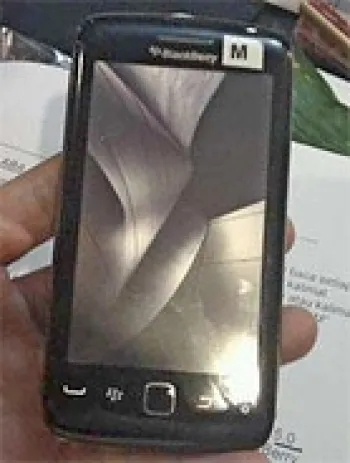BlackBerry Curve 8320 Specs Pricing Pros & Cons Unveiled

Overview of the BlackBerry Curve 8320
The BlackBerry Curve 8320, released in September 2007, is a classic smartphone from the earlier era of mobile technology. During its time, it was considered a premium model designed by BlackBerry, aiming to provide a blend of professional productivity tools with added multimedia capabilities. Though now discontinued, the Curve 8320 remains an iconic device, highlighting the shift in mobile communication during the mid-2000s.
Design and Build
With dimensions of 107 x 60 x 15.5 mm and a weight of 111 grams, the BlackBerry Curve 8320 is compact and lightweight, offering ease of use and portability. Its design features the classic BlackBerry QWERTY keyboard, which was favored for its efficiency in typing emails and messages. The keyboard layout remains one of BlackBerry's standout features, allowing users to quickly and accurately input text. The device is available in a couple of color variants: Titanium and Pale Gold, which give it a professional look.
Display
The Curve 8320 features a 2.5-inch display with a resolution of 320 x 240 pixels, translating to a pixel density of about 160 ppi. This screen size and resolution were standard at the time of the device's release, offering vibrant colors and decent clarity for viewing emails, browsing the web, and managing calendar appointments. The display supports 65K colors, making it suitable for basic multimedia use.
Performance and Software
Under the hood, the Curve 8320 is powered by a 32-bit Intel XScale PXA272 processor clocked at 312 MHz. While this processor may seem basic by today's smartphone standards, it was capable enough for handling the needs of users at the time, including browsing the web, checking emails, and other productivity tasks. The device runs on BlackBerry OS, which was known for its secure email capabilities and robust enterprise tools.
Memory and Storage
The device provides 64MB of internal storage, which can be expanded using a dedicated microSDHC card slot. This was particularly useful for users looking to store additional media and documents on their device. The storage capacity reflects the typical needs and constraints of mobile devices from that era.
Camera
The BlackBerry Curve 8320 is equipped with a 2 MP rear camera which includes an LED flash for support in low-light conditions. The camera can record video at resolutions of 240x180 pixels at 15 frames per second. The camera function in this device was not intended to replace dedicated digital cameras but provided basic functionality for capturing moments on-the-go.
Communication and Connectivity
The Curve 8320 supports GSM networks and includes GPRS and EDGE for data connectivity, highlighting its focus on global roaming and email communication. For short-range wireless communication, it features Bluetooth 2.0 with support for A2DP, as well as Wi-Fi 802.11b/g for wireless internet access. The device includes a miniUSB 2.0 port for charging and data transfer. However, it lacks GPS navigation and FM radio, which are more commonly found in later smartphone models.
Battery Life
The smartphone is powered by a removable Li-Ion 1100 mAh battery, a sizable power source for devices from that time. Users could expect up to 408 hours of standby time or up to 4 hours of talk time, which was sufficient for daily tasks and communication needs without frequent recharging. The removable nature of the battery also allowed users to swap it out for a spare if needed, providing flexibility and extended use.
Audio and Multimedia
The Curve 8320 features a loudspeaker and supports vibration, along with MP3 and WAV ringtones for personalized alerts. It is also equipped with a 3.5mm audio jack, which was a standard and convenient feature for connecting headphones and external audio devices at the time.
Additional Features
As a productivity-focused device, the Curve 8320 includes an HTML browser for internet access and email applications, which were integral parts of the BlackBerry service offering. However, it is worth noting that this device did not include some common smartphone sensors, limiting its compatibility with modern apps and functionalities.
Market Position and Legacy
Priced at approximately 140 EUR upon release, the BlackBerry Curve 8320 aimed at business professionals and tech-savvy consumers who valued an efficient device for communication and productivity over multimedia and gaming features. Despite its discontinuation, the Curve 8320 holds a place in mobile history as a representation of the pre-touchscreen smartphone era, highlighting BlackBerry's role in pioneering secure mobile communication.
Key Features of BlackBerry Curve 8320
- Compact and lightweight design with dimensions of 107 x 60 x 15.5 mm and weight of 111 g.
- QWERTY keyboard for efficient typing and communication.
- BlackBerry OS with a 32-bit Intel XScale PXA272 312 MHz CPU for reliable performance.
- 2.5-inch display with a resolution of 320 x 240 pixels, offering 65K colors for clarity.
- Expandable storage with microSDHC card slot.
- 2 MP main camera with LED flash for basic photography needs.
- Wi-Fi 802.11b/g and Bluetooth 2.0 with A2DP support for connectivity.
- 3.5mm audio jack for headphone and audio connectivity.
- Removable Li-Ion 1100 mAh battery providing up to 408 hours of standby time.
- Available in Titanium and Pale Gold colors.
Disadvantages of BlackBerry Curve 8320
- Discontinued model - no longer supported or available for purchase.
- Limited internal storage - only 64MB ROM, which is insufficient by modern standards.
- Low-resolution display - 320 x 240 pixels with a small 2.5-inch screen.
- Outdated OS - uses BlackBerry OS, which lacks support for modern apps and features.
- Poor camera performance - 2 MP main camera with low video resolution of 240x180@15fps.
- No GPS positioning available.
- Lacks a front-facing camera.
- No FM radio feature included.
- Limited processing power - only 312 MHz CPU.
- Short battery life - up to 4 hours of talk time.

View Also
More Phones
All Rights Reserved +14266 Phones © Mobilawy 2025

























